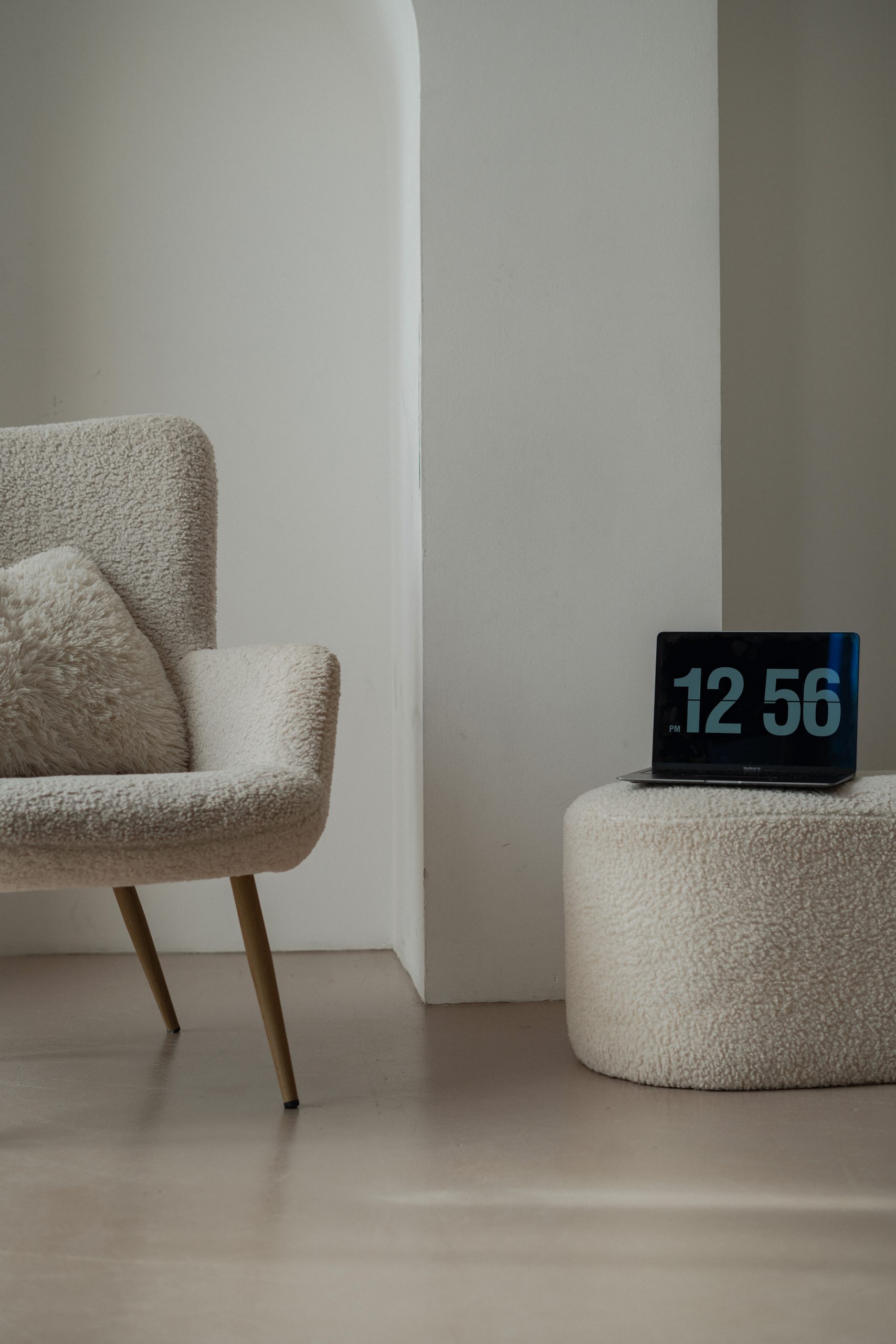Design studios, like any other business, must ensure strict adherence to I-9 compliance regulations. As an owner or a head of a design studio, it is crucial to understand the importance of these regulations and how they impact your business. This article will provide you with a comprehensive overview of I-9 compliance for design studios, explaining the key requirements and potential consequences of non-compliance. Additionally, we will address commonly asked questions about this topic, offering brief and informative answers to help you navigate this complex area of the law. By the end of this article, you will have a solid understanding of the steps necessary to maintain I-9 compliance within your design studio, safeguarding your business and avoiding potential legal pitfalls.
What is I-9 Compliance?
Definition of I-9 Compliance
I-9 compliance refers to the process of verifying the employment eligibility of individuals hired to work in the United States. It involves completing and maintaining Form I-9, which is used to document an employee’s identity and whether they are authorized to work in the country. The purpose of I-9 compliance is to ensure that employers hire only individuals who are legally allowed to work, in accordance with the requirements of the Immigration and Nationality Act (INA).
Importance of I-9 Compliance for Design Studios
I-9 compliance is particularly crucial for design studios, as it is essential for these businesses to maintain a legal workforce. Hiring unauthorized workers can have significant legal and financial consequences, including fines, penalties, and damage to the reputation of the studio. By implementing effective I-9 compliance practices, design studios can demonstrate their commitment to hiring legally authorized employees, ensuring compliance with employment eligibility regulations, and safeguarding their business.
Applicable Laws and Regulations
Overview of Immigration and Nationality Act (INA)
The Immigration and Nationality Act (INA) is the primary federal law governing immigration and naturalization in the United States. It provides the framework for determining eligibility for employment and sets requirements for verifying the identity and work authorization of employees. Design studios must adhere to the provisions of the INA when hiring and maintaining their workforce to ensure compliance with immigration regulations.
Role of the U.S. Immigration and Customs Enforcement (ICE)
The U.S. Immigration and Customs Enforcement (ICE) is the agency responsible for enforcing immigration laws within the United States. ICE conducts audits and inspections of employers’ I-9 forms to ensure compliance with employment eligibility verification requirements. Design studios should be aware of ICE’s role in enforcing I-9 compliance and proactively implement appropriate measures to comply with regulations and avoid potential penalties.
U.S. Citizenship and Immigration Services (USCIS) Regulations
The U.S. Citizenship and Immigration Services (USCIS) is the agency responsible for overseeing the legal immigration system in the United States. USCIS establishes the rules and regulations regarding the completion and retention of Form I-9. Design studios must familiarize themselves with the USCIS regulations that dictate the proper procedures for completing, storing, and updating I-9 forms to maintain compliance with federal immigration laws.
Designating an Authorized Representative
Understanding the Role of Authorized Representatives
Authorized representatives play a crucial role in the I-9 compliance process. They are individuals designated by the employer to complete and sign Section 2 of Form I-9 on behalf of the company. Authorized representatives are responsible for verifying employees’ identity and employment eligibility documents. They must be knowledgeable about the proper procedures and requirements outlined by USCIS and INA.
Selecting and Appointing an Authorized Representative for I-9 Compliance
Design studios should carefully select and appoint an authorized representative who is qualified, trustworthy, and familiar with I-9 compliance procedures. This individual should be trained on the requirements for completing Form I-9 and be able to effectively verify employees’ eligibility for employment. The studio should provide clear instructions and guidelines to the authorized representative to ensure consistent and accurate completion of I-9 forms.
Responsibilities of Designated Authorized Representatives
Authorized representatives bear significant responsibilities in maintaining I-9 compliance for design studios. They must diligently review and verify employees’ identification and employment eligibility documents, accurately complete Section 2 of Form I-9, and ensure timely compliance with all applicable regulations. It is crucial for authorized representatives to stay updated on any changes to immigration laws and regulations to ensure ongoing compliance.
Completing the I-9 Form
Understanding the Purpose of Form I-9
Form I-9 serves as a crucial tool in establishing an employee’s identity and eligibility to work in the United States. It requires both employees and employers to provide specific information and documentation to verify employment eligibility. By completing Form I-9, design studios can ensure they are hiring employees who are allowed to work in the country, while also maintaining a record of their compliance with immigration regulations.
Requirements for Completing Form I-9
When completing Form I-9, design studios must follow specific requirements outlined by USCIS. These include ensuring the form is completed within the designated timeframe, verifying the authenticity of the documents presented by the employee, and recording all required information accurately. Failure to meet these requirements can result in compliance violations and potential penalties.
Procedures for Section 1: Employee Information and Attestation
Section 1 of Form I-9 is completed by the employee, and it requires them to provide personal information, attest to their eligibility for employment, and provide their signature and date. Design studios must ensure that employees complete this section accurately and truthfully, as any discrepancies or intentional misrepresentations may lead to compliance issues.
Procedures for Section 2: Employer or Authorized Representative Review and Verification
Section 2 of Form I-9 must be completed by either the employer or the designated authorized representative. It involves verifying the authenticity of the documents provided by the employee and recording the necessary information. The employer or authorized representative must carefully review the documents to ensure they are valid and reasonably relate to the person presenting them.
Common Mistakes to Avoid when Completing Form I-9
When completing Form I-9, design studios must be aware of common mistakes that can lead to compliance issues or deficiencies. These may include failing to complete the form within the required timeframe, accepting invalid or expired documents, or failing to properly record and retain the form. By avoiding these mistakes, design studios can maintain I-9 compliance and mitigate the risk of penalties or fines.
Verification of Employment Eligibility
Types of Acceptable Documents for Verification
Design studios must verify the employment eligibility of their employees by examining specific types of acceptable documents. These documents are categorized into three different lists: List A documents establish both identity and employment authorization, List B documents establish identity, and List C documents establish employment authorization. It is essential for design studios to familiarize themselves with these lists and ensure compliance when verifying employee eligibility.
Timing and Deadlines for Verification
Employees must complete Section 1 of Form I-9 no later than their first day of employment, while Section 2 must be completed within three business days of the employee’s start date. Design studios must adhere to these deadlines to ensure timely and accurate verification of employment eligibility. Failure to meet these deadlines can lead to compliance violations.
Maintaining I-9 Records and Storage
Design studios are required to retain the completed Form I-9 for each employee throughout their employment and for a specified period after the employee’s termination. These records must be kept confidential and easily accessible for inspection by authorized government agents. Design studios should establish a proper record-keeping system and ensure the safe storage of I-9 forms to maintain compliance with record retention requirements.
Reverification and Updating Employment Authorization
When an employee’s work authorization expires, design studios must reverify their employment eligibility using Form I-9. Employers should establish procedures to monitor when reverification is necessary and ensure timely completion of the process. Failure to properly update employment authorization can lead to compliance issues and potential legal consequences.
I-9 Compliance Audits
I-9 Compliance Audits Explained
I-9 compliance audits are inspections conducted by ICE to determine whether employers are complying with employment eligibility verification regulations. These audits can be initiated randomly or as a result of specific triggers or complaints. Design studios must be prepared for potential audits and maintain accurate and up-to-date I-9 records to demonstrate compliance with immigration laws.
Triggering Factors for an Audit
Several factors may trigger an I-9 compliance audit for design studios. These may include a high number of employees with suspicious documents, discrepancies in employment records, tips or complaints filed by employees or other parties, or previous non-compliance issues. Design studios should be aware of these triggering factors and take appropriate measures to minimize the risk of an audit.
Preparing for an I-9 Compliance Audit
To prepare for an I-9 compliance audit, design studios should conduct regular internal audits to identify and rectify any potential compliance issues. They should review their I-9 records for accuracy and completeness, address any deficiencies or mistakes, and establish protocols for responding to audit requests. By proactively ensuring compliance, design studios can better navigate an audit and minimize potential penalties.
Addressing and Correcting Compliance Violations
In the event of non-compliance violations identified during an I-9 audit, design studios must promptly address and correct the issues. This may involve correcting errors on the forms, implementing necessary training and education programs for employees and authorized representatives, and establishing robust compliance procedures to prevent future violations. By taking corrective actions, design studios can mitigate the potential consequences of non-compliance.
Consequences of Non-Compliance
Penalties and Fines for I-9 Non-Compliance
Design studios that fail to comply with I-9 requirements can face significant penalties and fines. The penalties vary depending on the severity and frequency of the violations, ranging from financial penalties to criminal charges. It is crucial for design studios to prioritize I-9 compliance to avoid potential legal and financial consequences.
Negative Impact on Business Reputation
Non-compliance with I-9 requirements can have a detrimental effect on the reputation of design studios. News of non-compliance issues can spread quickly, damaging the credibility and trustworthiness of the business. Additionally, negative publicity can deter potential clients and employees, resulting in lost business opportunities and potential harm to the long-term success of the studio.
Legal Consequences of Non-Compliance
Non-compliance with I-9 requirements can expose design studios to various legal consequences. In addition to fines and penalties, these may include civil lawsuits filed by employees, criminal charges for knowingly hiring unauthorized workers, and potential negative immigration consequences. Design studios should understand the potential legal ramifications of non-compliance and take proactive measures to maintain compliance.
Training and Education on I-9 Compliance
Importance of Employee Training
Employee training is essential for ensuring I-9 compliance within design studios. By providing comprehensive training on the requirements and procedures for completing Form I-9, studios can empower their employees to accurately and consistently fulfill their obligations. Training also helps employees understand the importance of compliance, the consequences of non-compliance, and their role in maintaining a legal workforce.
Training Topics and Resources
Key training topics for design studios include the purpose and significance of Form I-9, proper completion procedures, documentation requirements, recognizing fraudulent documents, and understanding compliance obligations. Various resources and materials are available to assist in I-9 compliance training, including USCIS publications, online training modules, and specialized training programs offered by immigration law experts.
Ongoing Education and Compliance Updates
I-9 compliance requirements and immigration laws are subject to change over time. Design studios must prioritize ongoing education and stay updated on any changes to ensure continuous compliance. By actively seeking out relevant resources, attending industry seminars, and engaging with immigration law professionals, design studios can stay abreast of compliance updates and adapt their practices accordingly.
Frequently Asked Questions
What is the I-9 form used for?
The I-9 form is used to verify the identity and employment eligibility of individuals hired to work in the United States. It ensures that employers hire only legally authorized employees and comply with the requirements of the Immigration and Nationality Act.
Who needs to complete the I-9 form?
Both employers and employees have obligations to complete the I-9 form. Employers must ensure the form is filled out accurately and retained for each employee, while employees must provide the necessary information and documentation to establish their eligibility for employment.
Are there any exceptions to completing the I-9 form?
Most employees hired for employment in the United States must complete the I-9 form. However, there are limited exceptions, such as employees hired before November 6, 1986, and individuals hired for certain agricultural positions.
What happens if an employee’s work authorization expires?
When an employee’s work authorization expires, design studios must reverify their employment eligibility using Form I-9. Employers should establish procedures to monitor the expiration dates and promptly initiate the reverification process to ensure ongoing compliance.
Can remote employees or contractors complete the I-9 form?
Remote employees or contractors can complete the I-9 form using authorized representatives. These representatives must be designated by the employer and follow the proper procedures for completing Section 2 on behalf of the company.
Conclusion
Maintaining I-9 compliance is crucial for design studios to ensure they hire a legal workforce and avoid potential legal and financial consequences. By understanding the requirements, selecting authorized representatives, accurately completing form I-9, verifying employment eligibility, preparing for audits, and prioritizing ongoing training, design studios can establish a strong foundation for I-9 compliance. It is essential for design studios to prioritize compliance with immigration laws and regulations to protect their business and maintain a reputable reputation.






















